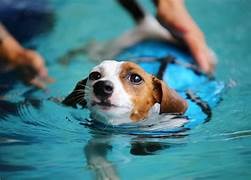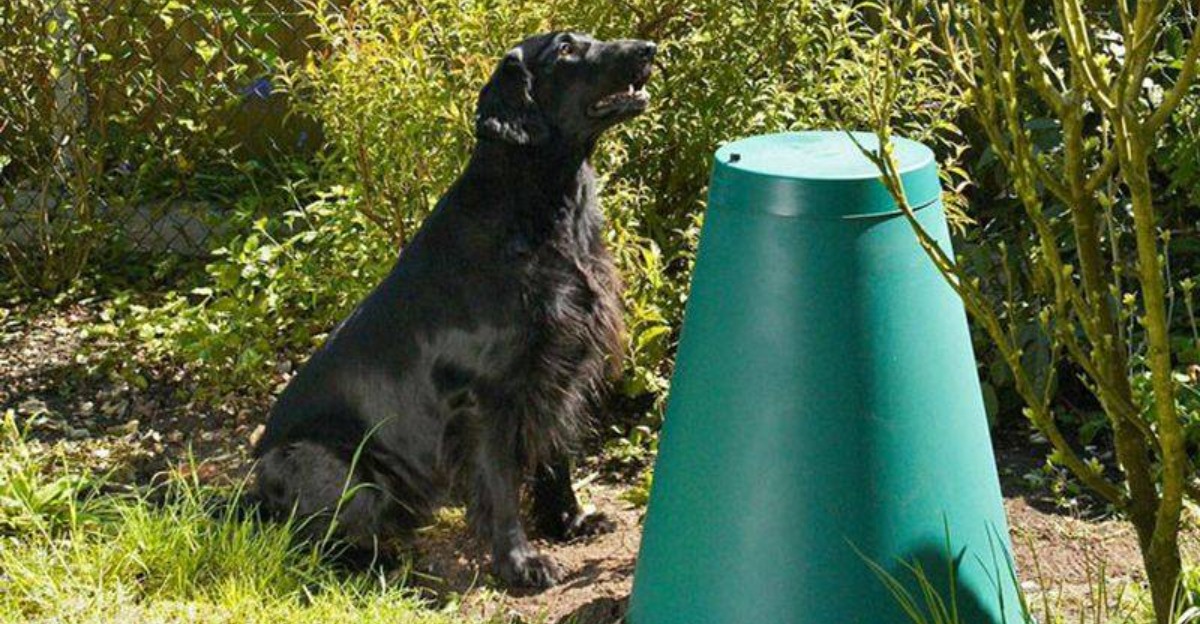
The Rise of Pet Physiotherapy and Hydrotherapy.
Pet physiotherapy and hydrotherapy are rapidly transforming veterinary care, offering non-invasive, science-backed methods to restore mobility, alleviate pain, and enhance the overall well-being of animals. From post-surgery recovery to arthritis management, these therapies improve physical health, mental wellness, and quality of life, making them essential components of modern pet rehabilitation and holistic healthcare practices.
🐶 Pet Star
53 min read · 12, Oct 2025

Introduction: A New Era in Animal Health Care
Over the past decade, pet healthcare has undergone a profound evolution. As pets increasingly become family members, their well-being, mobility, and longevity have become top priorities for owners and veterinarians alike. Among the most promising advancements in this space are pet physiotherapy and hydrotherapy—therapeutic practices once reserved for humans but now widely embraced in veterinary medicine.
Pet physiotherapy involves the use of physical techniques like massage, stretching, and controlled exercise to restore movement, alleviate pain, and enhance recovery. Hydrotherapy, on the other hand, utilizes the resistance and buoyancy of water to gently strengthen muscles and joints without placing undue stress on them. Together, these therapies offer a natural, effective alternative to invasive treatments and long-term medication use, especially for pets suffering from arthritis, obesity, neurological conditions, or post-surgical immobility.
Let’s explore how these therapies rose to prominence, their scientific foundations, their benefits, and why they are becoming essential for every pet’s wellness journey.
Section 1: The Evolution of Pet Physiotherapy
Physiotherapy as a medical discipline has been used for humans for centuries, but it wasn’t until the late 20th century that veterinarians began adopting similar principles for animals. Initially, equine physiotherapy (for horses) gained popularity, especially in sports medicine to help racehorses recover from injuries. As success stories accumulated, the concept expanded to small animals like dogs and cats.
The 2000s marked a turning point—with universities offering specialized certifications in animal physiotherapy and professional associations like the Association of Chartered Physiotherapists in Animal Therapy (ACPAT) and International Association of Animal Massage and Bodywork (IAAMB) standardizing the practice.
Modern pet physiotherapy includes:
- Manual therapy (massage, joint mobilization)
- Therapeutic exercises (balance training, strength conditioning)
- Electrotherapy (TENS, ultrasound, laser therapy)
- Cryotherapy and heat therapy for pain and inflammation management
These treatments not only restore lost mobility but also prevent secondary complications such as muscle atrophy, joint stiffness, and postural imbalances.
For aging pets or those recovering from orthopedic surgeries like cruciate ligament repair, physiotherapy offers a customized, compassionate approach that focuses on functional recovery and long-term wellness.
Section 2: Understanding Hydrotherapy and Its Benefits
Hydrotherapy is one of the most effective physiotherapeutic tools for pets—particularly dogs. It utilizes water’s natural properties—buoyancy, resistance, and hydrostatic pressure—to support and rehabilitate the body. The two main hydrotherapy setups are the underwater treadmill and the swimming pool.
- Underwater Treadmill Therapy:
- This setup allows pets to walk or run on a treadmill submerged in water. The buoyancy reduces body weight impact, while the adjustable water level controls resistance. It’s ideal for pets recovering from surgery or dealing with degenerative joint diseases.
- Pool-Based Hydrotherapy:
- Swimming sessions in a temperature-controlled pool engage the full body, improve cardiovascular health, and strengthen muscles—especially beneficial for athletic dogs or those needing low-impact workouts.
Key Benefits of Hydrotherapy:
- Reduces pain and stiffness by improving blood flow
- Increases muscle strength and endurance without overstraining joints
- Enhances balance and coordination
- Promotes faster post-surgical recovery
- Helps with weight loss in obese pets
- Boosts mental well-being through physical activity
Hydrotherapy is often combined with physiotherapy to deliver holistic results—improving both physical rehabilitation and emotional recovery.
Section 3: Scientific Backing and Veterinary Acceptance
In the early days, many veterinarians were skeptical about the efficacy of physiotherapy and hydrotherapy. However, recent scientific studies and clinical trials have validated their effectiveness in animal rehabilitation.
Research published in the Journal of Small Animal Practice demonstrated that dogs receiving physiotherapy post-surgery regained function up to 40% faster than those treated with medication alone. Similarly, hydrotherapy has been shown to improve joint range of motion and reduce lameness scores in dogs with osteoarthritis.
Veterinary schools worldwide, including the Royal Veterinary College (UK) and University of Tennessee (USA), now offer courses in animal rehabilitation. This integration of evidence-based therapy into mainstream veterinary education signifies the formal recognition of physiotherapy and hydrotherapy as vital components of animal health care.
Moreover, advances in technology—such as 3D gait analysis, laser therapy devices, and underwater treadmill sensors—allow practitioners to track progress accurately and customize treatment plans. This marriage of science and compassion ensures that pets not only live longer but also enjoy a higher quality of life.
Section 4: Common Conditions Treated by Physiotherapy and Hydrotherapy
Pet physiotherapy and hydrotherapy are beneficial across a wide range of conditions, including:
- Orthopedic Conditions
- Hip and elbow dysplasia
- Cruciate ligament injuries
- Patellar luxation
- Fracture recovery
- Neurological Disorders
- Intervertebral disc disease (IVDD)
- Degenerative myelopathy
- Nerve injuries
- Paralysis recovery support
- Arthritis and Age-Related Stiffness
- For senior pets, physiotherapy maintains flexibility, relieves pain, and delays degeneration.
- Obesity and Weight Management
- Hydrotherapy offers resistance-based exercise, burning calories efficiently while being gentle on joints.
- Sports and Performance Conditioning
- For working or athletic dogs—such as police dogs, agility champions, or racing breeds—these therapies improve endurance, prevent injuries, and speed up recovery between events.
Section 5: The Role of the Pet Owner
Successful rehabilitation requires teamwork between the physiotherapist, veterinarian, and the pet owner. Owners play a critical role in ensuring that home exercise routines, diet adjustments, and rest protocols are followed consistently.
Modern clinics often provide custom exercise plans, including:
- Gentle stretches and range-of-motion drills
- Controlled leash walks
- Balance and proprioception exercises using wobble boards
- Hydrotherapy sessions scheduled weekly or biweekly
In addition, pet owners must monitor subtle signs of progress or discomfort and communicate them to the therapist. Regular assessments help fine-tune the treatment plan, ensuring steady improvement.
Section 6: Emotional and Behavioral Impact
Physical pain often leads to emotional distress in pets. Limited mobility can cause frustration, depression, and even aggression. Physiotherapy and hydrotherapy not only heal the body but also rejuvenate the mind.
Swimming or walking in water boosts the release of endorphins, reducing stress and anxiety. Many pets regain their confidence and joy after a few sessions—transforming from lethargic and withdrawn to playful and active.
This psychological benefit makes these therapies invaluable, especially for pets recovering from trauma or long confinement periods after surgery.
Section 7: Challenges and Future Prospects
Despite their benefits, pet physiotherapy and hydrotherapy face certain challenges:
- Cost and accessibility: Specialized centers and equipment can be expensive.
- Lack of awareness: Many pet owners are unaware of these treatment options.
- Limited regulation: Not all countries have formal certification systems for animal physiotherapists.
However, as awareness spreads, the global pet rehabilitation market is projected to grow rapidly. The next decade may see mobile physiotherapy clinics, AI-assisted motion analysis, and virtual rehabilitation coaching for pet owners—all making therapy more accessible and affordable.
The integration of holistic veterinary care, combining modern medicine with physiotherapy and hydrotherapy, promises a more balanced and humane approach to animal well-being.
The world of veterinary care is evolving rapidly, and at the forefront of this transformation is the rise of pet physiotherapy and hydrotherapy, two rehabilitative sciences that are changing how we care for our animal companions. As pets become more deeply integrated into families, their physical health, mobility, and emotional well-being are being treated with the same seriousness as that of humans. Pet physiotherapy, rooted in human medical science, focuses on improving mobility, alleviating pain, and accelerating recovery after surgery or injury through hands-on techniques such as massage, stretching, and controlled exercise. Hydrotherapy, on the other hand, uses the natural buoyancy and resistance of water to allow pets—especially dogs—to exercise safely and rebuild strength without placing excess strain on their joints. Together, these therapies offer non-invasive, drug-free solutions that enhance quality of life, particularly for animals suffering from arthritis, neurological disorders, obesity, or post-surgical immobility. Historically, animal physiotherapy found its roots in equine therapy, used to help racehorses recover faster from injury. Over time, its success stories caught the attention of small-animal veterinarians, who adapted the methods for dogs and cats. The early 2000s saw universities offering dedicated programs and certifications in animal physiotherapy, while professional bodies like ACPAT and IAAMB standardized practice and ethics. Today, modern veterinary physiotherapy employs a blend of manual therapy, electrotherapy (like ultrasound and laser), cryotherapy, and therapeutic exercise to not only rehabilitate but also prevent musculoskeletal degeneration. Hydrotherapy has become an equally vital part of this ecosystem. The most common forms—underwater treadmills and temperature-controlled pools—use the principles of buoyancy and resistance to provide a low-impact yet highly effective workout. An underwater treadmill allows precise control of water depth and resistance, reducing weight-bearing stress by up to 60%, making it ideal for pets recovering from orthopedic surgeries like cruciate ligament repair. Swimming in pools, meanwhile, builds cardiovascular endurance, tones muscles, and boosts circulation, making it suitable for both rehabilitation and general fitness. The results are impressive: scientific studies reveal that dogs undergoing post-surgical physiotherapy regain muscle strength and coordination up to 40% faster than those treated solely with medication. Research published in leading veterinary journals has shown measurable improvements in joint range of motion, lameness reduction, and overall vitality in dogs undergoing hydrotherapy. As such evidence accumulates, physiotherapy and hydrotherapy are being integrated into mainstream veterinary care worldwide, supported by institutions like the Royal Veterinary College (UK) and the University of Tennessee (USA). Beyond orthopedic recovery, these therapies have proven effective for a wide range of conditions—neurological disorders such as intervertebral disc disease (IVDD), degenerative myelopathy, nerve injuries, paralysis recovery, and age-related stiffness. For older pets struggling with arthritis, physiotherapy maintains joint lubrication and flexibility while hydrotherapy offers gentle resistance training that strengthens muscles without pain. Even obesity management has found a new ally in hydrotherapy, which burns calories efficiently while remaining safe for overweight pets. In performance and working animals, such as police or agility dogs, physiotherapy prevents sports injuries, enhances endurance, and shortens recovery time after strenuous activity. What makes these therapies so effective is not just their physical impact but their emotional influence. Pets immobilized due to pain or surgery often suffer from frustration, depression, or anxiety. Physiotherapy and hydrotherapy sessions stimulate endorphin release, alleviating stress and restoring confidence. Many owners report that their pets seem happier, more energetic, and emotionally balanced after therapy—highlighting how physical rehabilitation can nurture psychological healing too. However, success depends on a triad: the veterinarian, the therapist, and the pet owner. Owners play an essential role in ensuring that prescribed home exercises—like range-of-motion drills, balance training, and controlled walks—are consistently followed. Some clinics even provide personalized exercise charts, video guides, and progress-tracking apps to help pet parents stay engaged in the rehabilitation process. The emotional bond between pet and owner often deepens during these recovery journeys, as owners witness their companions gradually regaining independence and vitality. Despite its growing popularity, pet physiotherapy and hydrotherapy face challenges. Specialized centers are limited, particularly in developing regions, and the cost of equipment such as underwater treadmills can be prohibitive. Furthermore, while some countries have robust certification systems, others lack regulation, allowing unqualified practitioners to operate. Yet, awareness is expanding rapidly through online education, social media, and veterinary recommendations. The global animal rehabilitation market is projected to grow significantly over the next decade, driven by rising pet ownership, technological innovation, and the “humanization of pets.” Emerging trends like mobile physiotherapy services, AI-driven gait analysis, and tele-rehabilitation programs are set to make these treatments more accessible and affordable. In the future, pet physiotherapy and hydrotherapy will likely be as common as vaccinations or dental cleanings—an integral part of routine preventive healthcare. Ultimately, these therapies represent a fundamental shift in how we perceive animal wellness. They embody a philosophy that healing isn’t just about treating illness but restoring movement, function, and happiness. Whether it’s an aging Labrador finding relief from arthritis in a warm hydrotherapy pool, a cat regaining balance after spinal surgery, or a rescue dog rebuilding trust through gentle massage, these practices are rewriting the narrative of animal care. The combination of science, compassion, and physical rehabilitation ensures pets live not just longer lives but better ones—filled with comfort, dignity, and play. As more owners recognize that mobility and mental well-being are inseparable, physiotherapy and hydrotherapy will continue to rise as cornerstones of modern veterinary medicine, offering every pet the opportunity to move freely, heal naturally, and thrive joyfully beside the humans who love them.
Over the last two decades, the world of animal healthcare has witnessed a remarkable transformation with the emergence and rapid growth of pet physiotherapy and hydrotherapy, two rehabilitative approaches once reserved exclusively for humans but now revolutionizing veterinary medicine. As pets have evolved from mere companions to beloved family members, their health, mobility, and quality of life have become central to responsible ownership. Physiotherapy for pets focuses on restoring, maintaining, and improving physical function, mobility, and muscle strength through a series of controlled exercises, massages, stretches, and therapeutic modalities such as laser treatment, ultrasound, and electrical stimulation. Hydrotherapy, in contrast, makes use of water’s buoyant and resistive properties to allow safe, low-impact movement that strengthens muscles, improves circulation, and relieves pain without adding undue stress on joints. Both methods are now recognized globally as integral components of veterinary rehabilitation, helping pets recover from surgery, manage chronic conditions like arthritis, cope with neurological disorders, and even shed excess weight. The roots of animal physiotherapy can be traced back to equine therapy, where racehorses were treated to enhance performance and accelerate recovery from musculoskeletal injuries. Encouraged by these successes, veterinarians began adapting the same methods for smaller animals, especially dogs and cats. By the early 2000s, specialized training programs and certifications emerged, with institutions such as the Royal Veterinary College (UK) and the University of Tennessee (USA) incorporating animal rehabilitation into their curricula. This shift marked the beginning of a new era in pet wellness—one that blends science, compassion, and individualized care. Today, physiotherapy techniques include manual therapy (deep-tissue massage and joint mobilization), therapeutic exercises (balance boards, core strengthening, and stretching), electrotherapy (TENS and laser), and cryotherapy or heat therapy to manage inflammation and pain. Hydrotherapy, on the other hand, has gained immense popularity for its efficiency and gentleness. The two most common forms—underwater treadmill therapy and swimming pool sessions—use water’s buoyancy to reduce body weight impact and its resistance to build muscle strength. Underwater treadmills allow practitioners to adjust water levels and treadmill speed to create the perfect environment for each pet’s recovery phase, making it especially effective for dogs recovering from surgeries like cruciate ligament repair or hip replacement. Swimming in a temperature-controlled hydrotherapy pool, meanwhile, engages the full body, enhances cardiovascular health, and strengthens joints—ideal for pets with arthritis or obesity. Scientifically, these therapies are now backed by extensive research. Studies published in veterinary journals have shown that dogs receiving physiotherapy post-surgery regained limb function significantly faster than those who only received medication, while hydrotherapy has been proven to increase range of motion and reduce pain levels in arthritic dogs. Veterinary professionals now widely accept these treatments as complementary to traditional medicine, and the integration of technology—like motion sensors, 3D gait analysis, and laser-assisted recovery—has made results more measurable and precise. The range of conditions benefiting from these therapies is vast. Physiotherapy assists pets suffering from orthopedic problems like fractures, hip and elbow dysplasia, and patellar luxation. It also helps in neurological conditions such as intervertebral disc disease (IVDD), nerve injuries, and degenerative myelopathy by retraining muscles and promoting neural communication. Hydrotherapy serves as a lifeline for obese pets, enabling calorie burning without the joint strain of land exercise, while also improving balance, stamina, and mental health. Senior pets gain immense relief through these gentle methods that keep their joints supple, muscles strong, and spirits lifted. Beyond physical benefits, the emotional and behavioral impact of these therapies is profound. Pain and immobility often lead to frustration, depression, or anxiety in animals; when mobility is restored, pets regain confidence and joy. The soothing nature of water, combined with the therapist’s gentle touch, releases endorphins, improving both mood and motivation. Many owners describe their pets as happier, more alert, and playful after just a few sessions. However, success in rehabilitation depends not only on the therapist and veterinarian but also heavily on the pet owner. Commitment to prescribed home exercises, diet control, and observation of behavioral cues are essential to ensure steady progress. Clinics now provide customized rehabilitation plans and teach owners how to perform basic exercises safely at home, creating a partnership approach to healing. Despite its clear advantages, pet physiotherapy and hydrotherapy face challenges in accessibility and affordability. The high cost of specialized equipment such as underwater treadmills and the need for trained professionals limit widespread availability, particularly in developing regions. Additionally, the lack of standardized global regulation sometimes allows unqualified individuals to practice, which can risk the animal’s safety. Yet, with awareness growing rapidly through digital media and veterinary education, the global pet rehabilitation market is poised for exponential growth. In the near future, we can expect innovations like AI-driven motion tracking, virtual rehabilitation guidance, and portable hydrotherapy units that make therapy more personalized and affordable. The increasing humanization of pets—where owners seek the same level of healthcare for animals as for themselves—continues to fuel this movement. The future of pet physiotherapy and hydrotherapy lies in integration: blending traditional veterinary medicine, holistic healing, nutrition, and physical therapy to create complete wellness programs that nurture both body and mind. Ultimately, these therapies symbolize a broader shift in how we perceive animal health—not just as the absence of disease but as the pursuit of vitality, movement, and happiness. Whether it’s a senior dog walking comfortably again after years of arthritis, a cat regaining balance after spinal surgery, or an overweight labrador joyfully paddling in a hydrotherapy pool, each success story demonstrates how science and empathy together can transform lives. The rise of physiotherapy and hydrotherapy has redefined pet rehabilitation, proving that healing is not merely about fixing injuries but restoring dignity, mobility, and the spark of life itself. As awareness spreads and technology advances, these therapeutic practices are set to become the cornerstone of modern veterinary care, ensuring that every pet—regardless of age, breed, or condition—can move, live, and love with renewed energy and joy.
Conclusion
The rise of pet physiotherapy and hydrotherapy marks a revolutionary shift in how we care for our furry companions. These therapies, once experimental, are now scientifically validated and globally recognized for their ability to restore mobility, reduce pain, and enhance quality of life—naturally and non-invasively.
As more veterinarians and pet owners embrace these modalities, they are helping countless animals live happier, healthier, and more active lives. The combination of compassion, science, and physical therapy has redefined veterinary wellness—proving that healing is not just about treating diseases, but about restoring movement, confidence, and joy.
Q&A Section
Q1: What is pet physiotherapy?
Ans: Pet physiotherapy involves physical treatments—like massage, stretching, and targeted exercise—to improve mobility, relieve pain, and speed up recovery from injury or surgery.
Q2: How does hydrotherapy help pets?
Ans: Hydrotherapy uses water’s buoyancy and resistance to allow pets to exercise without stressing their joints, improving strength, flexibility, and cardiovascular health.
Q3: Which animals benefit most from these therapies?
Ans: Dogs, cats, and horses are the primary beneficiaries, though physiotherapy can help almost any animal with musculoskeletal or neurological issues.
Q4: Is hydrotherapy safe for senior pets?
Ans: Yes. In fact, hydrotherapy is ideal for elderly pets suffering from arthritis or stiffness, as it provides gentle, low-impact exercise.
Q5: How long does it take to see improvement?
Ans: Most pets show noticeable improvement within 4–6 weeks, depending on the condition’s severity and treatment consistency.
Similar Articles
Find more relatable content in similar Articles

Composting Pet Waste: A Greener Way to Clean Up...
As pet ownership continues to .. Read More

Pets and Mental Health: The Science Behind Emotional H..
Discover the profound impact o.. Read More

Virtual Vet Visits: Are Online Consultations Reliable?..
As pet healthcare embraces dig.. Read More

Social Media for Pets: Turning Your Pet into a Digital..
From playful puppies to charis.. Read More
Explore Other Categories
© 2024 Copyrights by rPets. All Rights Reserved.